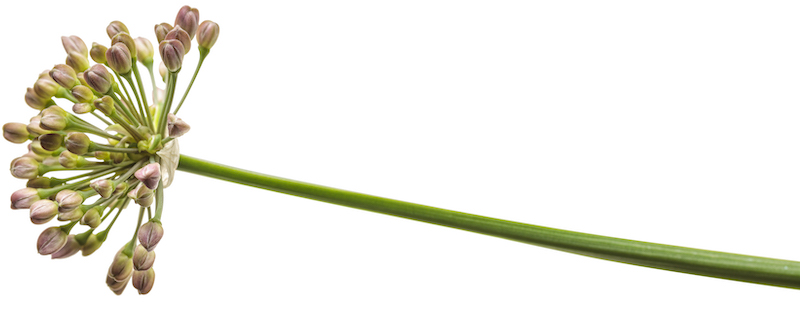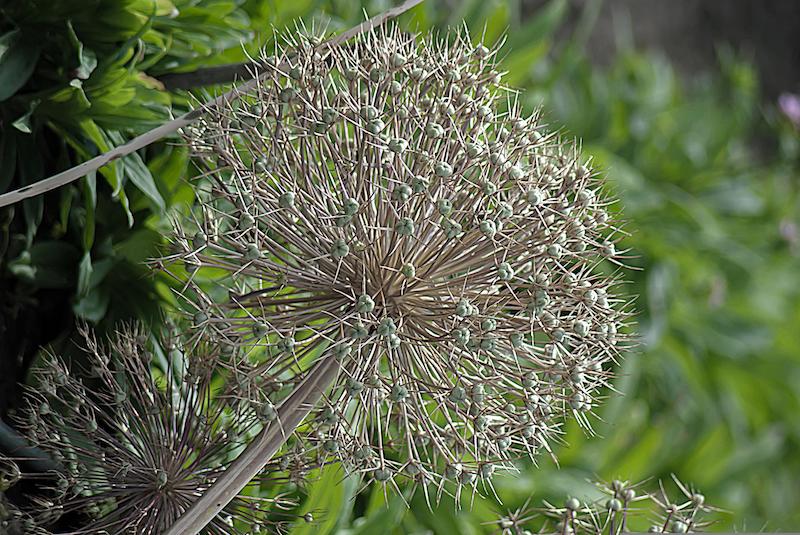Alliums are perennial bulbs that die back completely each winter. The bulbs have a wide variety of blooming times, ranging from late spring all of the way to late summer. After blooming, each cultivar will start to die back for the season. Early blooming cultivars will be completely dormant by the time the late varieties flower. Pruning in all cases involves a simple cutting back of the remaining leaves and stems at the right time.

When to Prune Alliums
Alliums are bulbs and need to store energy in their bulb for the winter and next season's growth. After the bloom stem has died back, it can be cut off, or deadheaded, to prevent the plant from forming seeds. The remaining foliage needs to be left alone for as long as possible. The longer it stays attached, the more food the bulb can store for winter. Make sure to remove all leaves and stems by the first frost. Freezing of the foliage will make it slimy and more prone to rot the bulb.
Since ornamental alliums bloom just once a season, there is no way to encourage reblooming by regular deadheading or pruning of the plant. The remaining foliage is often attractive for a few more weeks and can add interest when combined with other perennials that have contrasting or complimentary leaf shapes.

Why Prune Alliums
Pruning, or cutting back alliums is part of the annual fall maintenance cycle. Cutting off any leaves and stems as soon as they die back will help to control the spread of any diseases. All alliums, edible and ornamental, are susceptible to fungal rusts and mildew that can overwinter on infected plant material. The easiest way to prevent these diseases is to use good fall sanitation practices and avoid watering the plants with overhead sprinklers or hose-end sprayers.

How to Prune Alliums
Step 1 - Deadhead the spent flower
Cut the flower stem all of the way back to the basal leaves, so that the plant does not put energy into setting seeds.
Step 2 - Wait for the leaves to naturally die back
Remove the dead leaves and stems at ground level. Waiting for them to die back on their own will help the bulb make enough food for the winter and next growing season.
Step 3 - Cut back the leaves and stems of late bloomers after the first frost
Leaves and stems of late-blooming cultivars should be removed once they die back. The first frost will turn the leaves slimy and should be removed before they can rot the bulb.
Allium Pruning Tips
- Deadhead flowers to keep plant from setting seeds that take energy away from the bulb
- Let foliage and stems die back naturally
- Cut back foliage and stems of late bloomers after the frost has killed them
- Ornamental alliums only bloom once a growing season
